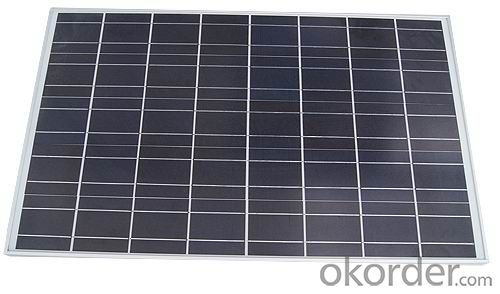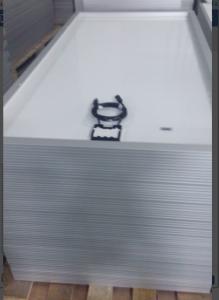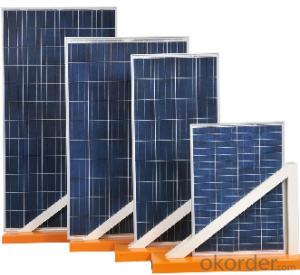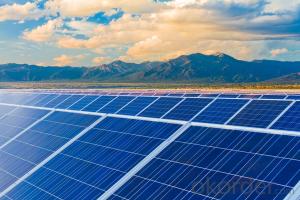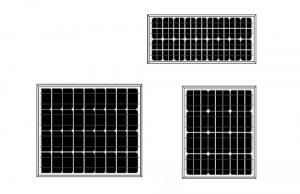Photoelectric Solar Panels - Polycrystalline TPB156x156-54-P Solar Modules
- Loading Port:
- Ningbo
- Payment Terms:
- TT OR LC
- Min Order Qty:
- 100 carton
- Supply Capability:
- 10000 carton/month
OKorder Service Pledge
OKorder Financial Service
You Might Also Like


Specification:
· Highest performance enabled by higher efficiency monocrystal line cells and the latest Solar Wafer Technology for multicrystal line cells
· Lower weight design which reduces the total system load on a roof, making it ideal for residential customers. Its shape allows for better roof utilization
· Its low weight means easier handling for installers
· Modules are designed to withstand PID (Potential Induced Degradation)*
· High light transmission Anti-Reflective Glass with improved self-cleaning capability
· 0/+5 W Positive power tolerance for reliable power output
Warranty
CNBM Solar provides one of the most comprehensive module warranties in the industry:
· 10 years for product defects in materials and workmanship
· First 12 years for 90% of warranted minimum power
· Remaining 25 years for 80% of warranted minimum power
Certification
CNBM Solar strictly carries out the ISO 9001 quality control methodology and has implemented check points at every step of the production process to ensure our product performance durability and safety. The stringent quality control process has been confirmed by numerous independent agencies and LDK Solar modules earned IEC, TUV and UL certifications.
· IEC:IEC 61215, IEC 61730 (1&2), conformity to CE
· UL 1703 2002/03/15 Ed:3 Rev:2004/06/30
· ULC/ORD-C1703-01 Second Edition 2001/01/01
· UL and Canadian Standard for Safety Flat-Plate
· ISO 9001: 2008 Quality Management Systems
· CEC Listed: Modules are eligible for California Rebates
· PV Cycle: Voluntary module take back and recycling program
· MCS Certificate
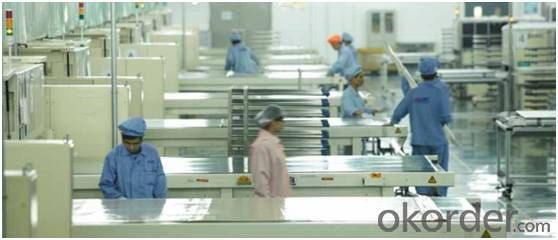
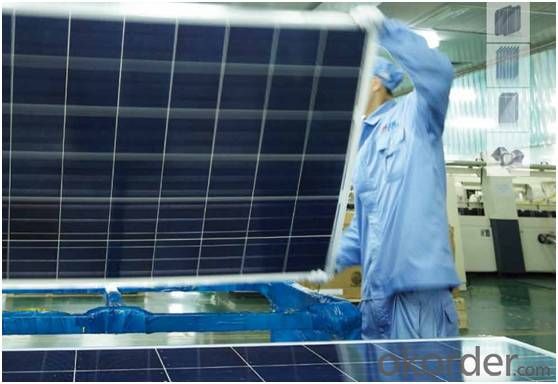

FAQ
1. How do I decide which system is right for me ?
For protection from long outages, include a generator or solar panels in your Must solar system. Shorter outages can be handled by a battery-only system.
2. Where my system will be installed ?
Must solar systems are usually wall-mounted near a home's main electrical (circuit breaker) panel.
3. How do I install my system ?
A must solar backup inverter is connected to a home electric system , we will supply detailed installation manual and videos for our customers .
How fast will my system respond to a power outage ?
Must solar inverters typically transfer to battery power in less than 16 milliseconds (less than 1/50th of a second).
What kind of batteries do the systems include ?
Must solar backup electric systems use special high-quality electric storage batteries.
- Q: How do solar panels affect home resale value?
- Solar panels can increase the resale value of a home due to their potential cost savings and environmental benefits. Studies have shown that homes equipped with solar panels tend to sell faster and at higher prices compared to similar properties without solar installations.
- Q: How do solar panels affect the property's community image?
- Solar panels can have a positive impact on a property's community image by showcasing a commitment to sustainability and renewable energy. They can enhance the property's reputation as an environmentally conscious and forward-thinking community, leading to increased respect and admiration from residents and neighbors. Additionally, solar panels can act as a visual symbol of progress and innovation, contributing to a positive perception of the property and potentially attracting like-minded individuals or businesses to the community.
- Q: I have seen DIY software which explains everything for novices. Specifically, how to build your own solar panels and tie them into your home electrical system for about $00 in parts.Has anyone tried doing this? Was it easy?
- I used this youtube video to help me build a 2 volt system. I used this video to build a magnet motor attached to a car alternator, I used an old Ford alternator because they are cheap, then put in the voltage reguialtor that I took out of the same car. I then hooked that up to 6 2 volt batteries in series, then I used 4 500 watt inverters, I got it going about 2 weeks ago, I am waiting to how efficient it will make everything, I also do not have my entire house on it. So far I have hooked up my fridge, deep freeze, 52 plasma tv, and washer. I have not hooked anything else into it yet. I have no idea if it has enough power to turn on full load, like I said I am still toying with it, but it seems to be doing fine.
- Q: Can solar panels be installed on flat surfaces?
- Yes, solar panels can be installed on flat surfaces. However, it is more common to install them on angled surfaces such as rooftops or mounting structures to maximize their efficiency and exposure to sunlight.
- Q: im aware i dont fully understand. but with what i do. if P = iv, and current changes with voltage, whats the point of changing either. if in any cicumstance, you end up with the same wattage, how does changing either effect a solar setup. (2v panel vs 24v)thanks in advance. explain in laymans if you can.
- The choice of solar panel voltage comes down more to what the panels will be connected to. You're right that power can remain the same at the different voltages. Higher input (panel) voltages are sometimes used in inverter systems to reduce the effect of voltage draw-down. 2v panels (about 20v open circuit) work well for charging 2v batteries, connected in parallel, through a charge controller. For use of a grid-tie inverter, higher input voltages are sometimes used to reduce the effects of draw-down. You want to select and wire (parallel vs. series) your panels based on the input voltage requirement of the load, whatever it may be.
- Q: I've run out of things to keep me entertained recently and as part of a larger project, I was curious if its possible to 'McGuyver' up a solar panel out of common materials?
- It okorder /
- Q: I've built a set of lights, fan and a clock running on only solar power. The problem is, i have to present it tomorrow and when the light isn't particularly strong it won't work too well. It works flawlessly when its under my desk light on max brightness but the only the light works when i set it to low brightness. Currently, tomorrow in my city it won't be sunny so any advice for trying to make it work under low light?
- Solar panels are designed to be used to recharge a battery or series of batteries, not for direct power. That is the inherent weakness of solar systems. The only way to have it work in low light conditions if to have several cells wired in series and have a voltage regulator to limit the amount of voltage that can be supplied. Other than that, add a battery and a charging circuit that the cell would supply power to.
- Q: How do solar panels affect roof maintenance?
- Solar panels can actually help extend the lifespan of a roof by providing an additional layer of protection from the elements. They act as a shield, preventing direct exposure of the roof to rain, snow, and hail. However, regular maintenance is still necessary to ensure the panels are clean and functioning optimally, as any debris buildup or damage to the panels could indirectly affect the roof.
- Q: Just curious.
- Since you said does instead of do I think it would be fruitless trying to explain it...
- Q: Can solar panels be used to power a hospital?
- Yes, solar panels can be used to power a hospital. Solar panels convert sunlight into electricity, which can be used to meet the energy needs of various facilities, including hospitals. By installing a solar power system, a hospital can generate clean and renewable energy, reducing its reliance on traditional grid power and potentially saving costs in the long run. However, the feasibility of using solar panels to power a hospital depends on factors such as the hospital's energy requirements, available space for solar panel installation, and the local climate conditions. Additionally, backup power solutions may be necessary to ensure uninterrupted electricity supply during periods of low sunlight or system maintenance.
Send your message to us
Photoelectric Solar Panels - Polycrystalline TPB156x156-54-P Solar Modules
- Loading Port:
- Ningbo
- Payment Terms:
- TT OR LC
- Min Order Qty:
- 100 carton
- Supply Capability:
- 10000 carton/month
OKorder Service Pledge
OKorder Financial Service
Similar products
Hot products
Hot Searches
Related keywords




